 1990 Opel Corsa A (facelift 1990) Dimensions, Size & Specs
1990 Opel Corsa A (facelift 1990) Dimensions, Size & SpecsMeasurements of the 1990 Opel Corsa A, engineered for optimal performance and comfort
| Dimensions | |
|---|---|
| Length: | 3652 mm143.8 in12.0 ft |
| Width: | 1532-1542 mm60.3-60.7 in5.0-5.1 ft |
| Height: | 1365 mm53.7 in4.5 ft |
| Ground Clearance: | 140 mm5.5 in0.5 ft |
| Trunk Capacity: | 270 liter9.5 cu ft |
| Trunk Capacity (Max): | 1060 liter37.4 cu ft |
| Weight Specifications | |
| Curb Weight: | 740-855 kg1631-1885 lbs |
| Maximal permitted Weight: | 1215-1315 kg2679-2899 lbs |
| Tire Specifications | |
| Rims Sizes: | 14-inch rims:
|
| Tire Sizes: |
|
The Opel Corsa A facelift edition, produced from 1990 to 1993, is a compact hatchback that strikes a balance between city-friendly maneuverability and practical everyday use. Measuring 3652 mm (approximately 143.8 inches) in length, the car maintains a narrow stance with a width ranging between 1532 mm and 1542 mm (about 60.3 to 60.7 inches), making it suitable for urban environments where parking space and tight roads are common. The height of the vehicle is 1365 mm (53.7 inches), contributing to a low center of gravity and stable driving dynamics.
Weighing between 740 and 855 kg (1631 to 1884 pounds) in its curb weight, the Corsa A facelift is lightweight, which enhances fuel efficiency and agility on the road. The permissible maximum weight ranges from 1215 to 1315 kg (2678 to 2898 pounds), accommodating passengers and cargo without compromising stability. The car’s ground clearance stands at 140 mm (5.5 inches), providing enough ride height to handle typical road irregularities with ease.
The hatchback offers a practical luggage capacity of 270 liters (9.5 cubic feet) with rear seats in place, which expands significantly to 1060 liters (37.4 cubic feet) once the rear seats are folded down. This flexible cargo space supports various needs, from grocery runs to small luggage loads for weekend trips. The wheel sizes include 14-inch rims with tire options like 175/65 R14, 165/65 R14, 145/70 R13, and 165/70 R13, balancing ride comfort and road handling.
Overall, the Opel Corsa A facelift (1990-1993) remains a quintessential European supermini with an emphasis on economy, compact size, and versatile usability, ideal for drivers seeking a reliable and manageable city hatchback.
Discover the standout features that make the 1990 Opel Corsa A a leader in its class
Have a question? Please check our knowledgebase first.
The Opel Corsa A (facelift 1990) hatchback measures 3652 mm (143.8 inches) in length, with a width ranging from 1532 mm to 1542 mm (60.3 to 60.7 inches), and a height of 1365 mm (53.7 inches). These compact dimensions characterize the Corsa A as a small city car, easy to maneuver and park.
The curb weight of the Opel Corsa A facelift ranges between 740 kg and 855 kg (1631 to 1885 lbs), depending on the specific model and equipment. Its maximum permissible weight lies between 1215 kg and 1315 kg (2679 to 2899 lbs). This relatively light curb weight contributes to nimble handling and good fuel efficiency.
The Opel Corsa A facelift offers a luggage capacity of 270 liters (about 9.5 cubic feet) with the rear seats in upright position. When the rear seats are folded, the luggage volume expands significantly to approximately 1060 liters (37.4 cubic feet), providing ample storage space for a small hatchback.
The ride height or ground clearance of the Opel Corsa A facelift is 140 mm (5.5 inches). This moderate ground clearance is typical for small hatchbacks, offering a balance between stability in urban driving conditions and the ability to handle minor road irregularities without risk of scraping underneath.
The Opel Corsa A facelift was equipped with rims sized 14 inches, specifically 5J x 14. Tire options supported included 175/65 R14, 165/65 R14, 145/70 R13, and 165/70 R13 tire sizes. These tire dimensions were chosen to support handling dynamics, ride comfort, and fuel efficiency for the compact hatchback.
With its length of 3652 mm (143.8 inches) and width under 1542 mm (60.7 inches), the Opel Corsa A facelift fits comfortably into most standard single-car garages. Standard garage sizes typically accommodate vehicles up to about 6 meters (19.7 feet) long and 2.4 meters (7.9 feet) wide, so the Corsa offers ample clearance and ease of parking indoors.
The Opel Corsa A facelift (1990-1993) retained very similar dimensions to the original Corsa A produced earlier in the 1980s, with length at approximately 3652 mm and width close to 1530-1540 mm. The facelift mainly updated design and mechanical components rather than significantly altering the overall size. Thus, drivers transitioning from the pre-facelift to facelift model would find familiar dimensions and handling characteristics.
The Opel Corsa A facelift is comparable in size to contemporaries like the Ford Fiesta Mk3 and Volkswagen Polo Mk2. With a length around 3.65 meters (143.8 inches), width near 1.54 meters (60.7 inches), and modest height, it sits comfortably within the small hatchback segment. Its compact dimensions favor urban driving and easy parking over long-distance comfort but provide reasonable cabin space for its class.
The Opel Corsa A facelift, produced from 1990 to 1993, is a small hatchback known for its practicality and efficient use of space. It combined updated styling with reliable engine options and modest curb weight between 740 and 855 kg, resulting in nimble urban handling and good fuel economy. The facelift brought aesthetic improvements and minor mechanical enhancements over the original Corsa A. Its spacious luggage area, especially with seats folded, along with compact external dimensions, made it a popular choice for city drivers needing a versatile yet economical vehicle.
The Opel Corsa A facelift ran on tire sizes including 175/65 R14, 165/65 R14, 145/70 R13, and 165/70 R13, mounted on 14-inch rims (5J x 14). Smaller tires like the 13-inch options offered a softer and more comfortable ride, while larger 14-inch tires improved handling responsiveness and stability at the expense of some ride comfort. These tire options allowed drivers to balance comfort and sportiness based on preference.
Discover similar sized cars.
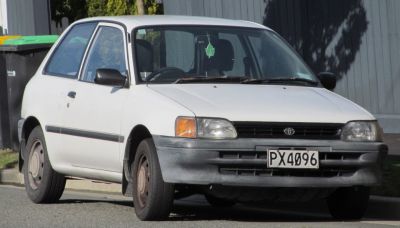
| Production: | 1989-1996 |
|---|---|
| Model Year: | 1990 |
| Length: | 3720 mm146.5 in |
| Width: | 1600 mm63.0 in |
| Height: | 1380 mm54.3 in |

| Production: | 1971-1986 |
|---|---|
| Model Year: | 1971 |
| Length: | 3625 mm142.7 in |
| Width: | 1527 mm60.1 in |
| Height: | 1358 mm53.5 in |

| Production: | 1974-1983 |
|---|---|
| Model Year: | 1974 |
| Length: | 3723 mm146.6 in |
| Width: | 1610 mm63.4 in |
| Height: | 1410 mm55.5 in |

| Production: | 1974-1983 |
|---|---|
| Model Year: | 1974 |
| Length: | 3723 mm146.6 in |
| Width: | 1610 mm63.4 in |
| Height: | 1410 mm55.5 in |
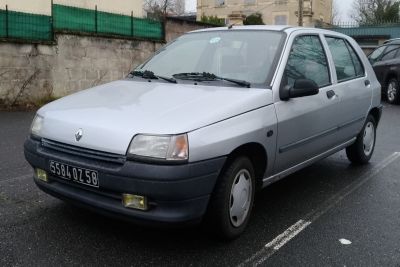
| Production: | 1990-1998 |
|---|---|
| Model Year: | 1990 |
| Length: | 3709 mm146.0 in |
| Width: | 1616 mm63.6 in |
| Height: | 1395 mm54.9 in |
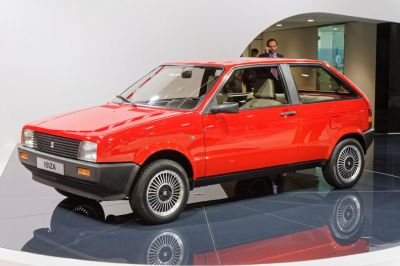
| Production: | 1984-1993 |
|---|---|
| Model Year: | 1984 |
| Length: | 3685 mm145.1 in |
| Width: | 1610 mm63.4 in |
| Height: | 1410 mm55.5 in |
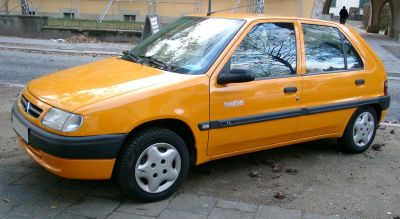
| Production: | 1996-1999 |
|---|---|
| Model Year: | 1996 |
| Length: | 3718 mm146.4 in |
| Width: | 1595 mm62.8 in |
| Height: | 1390 mm54.7 in |
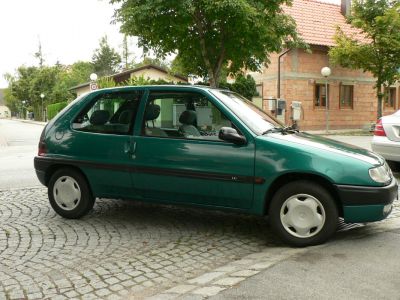
| Production: | 1996-1999 |
|---|---|
| Model Year: | 1996 |
| Length: | 3718 mm146.4 in |
| Width: | 1595 mm62.8 in |
| Height: | 1390 mm54.7 in |
